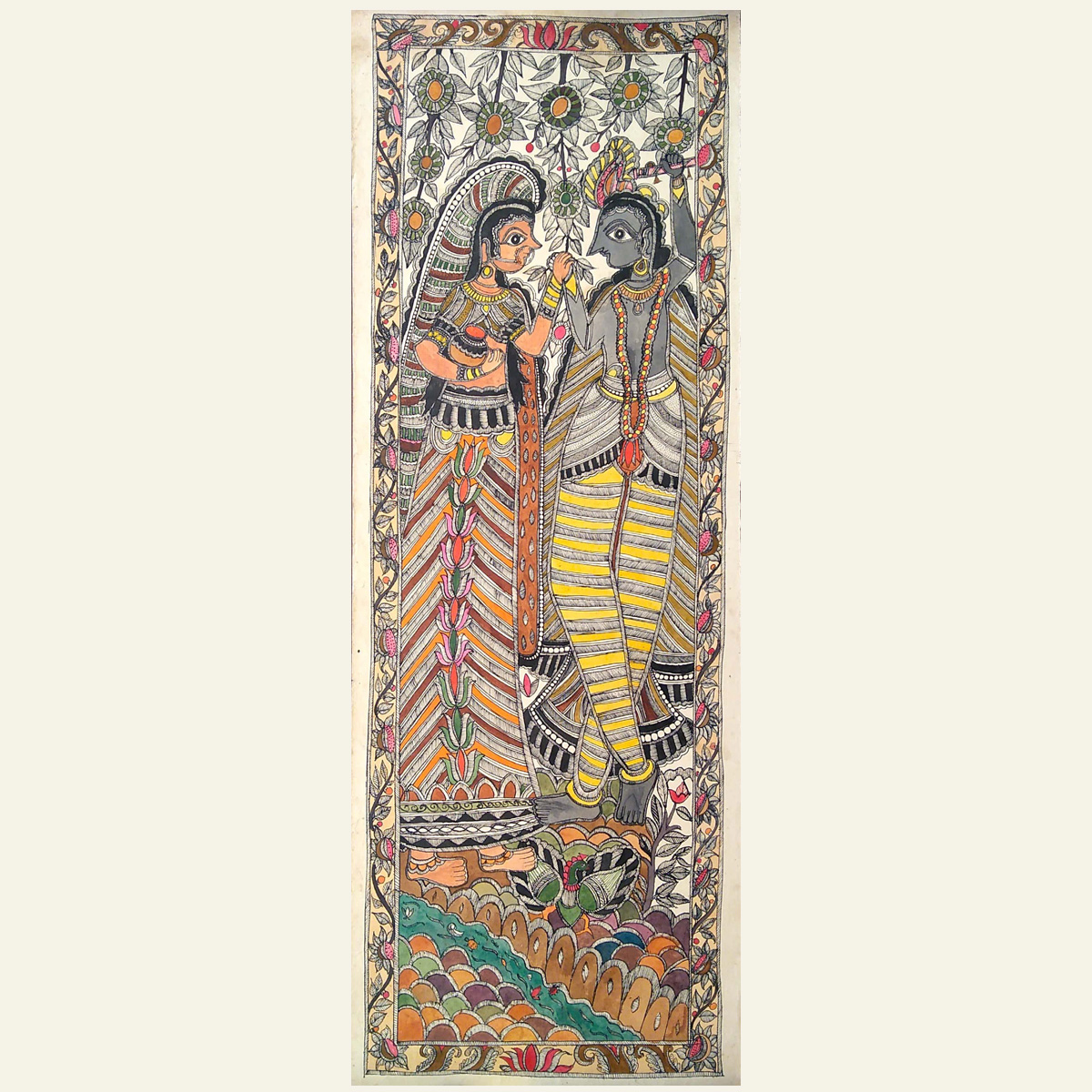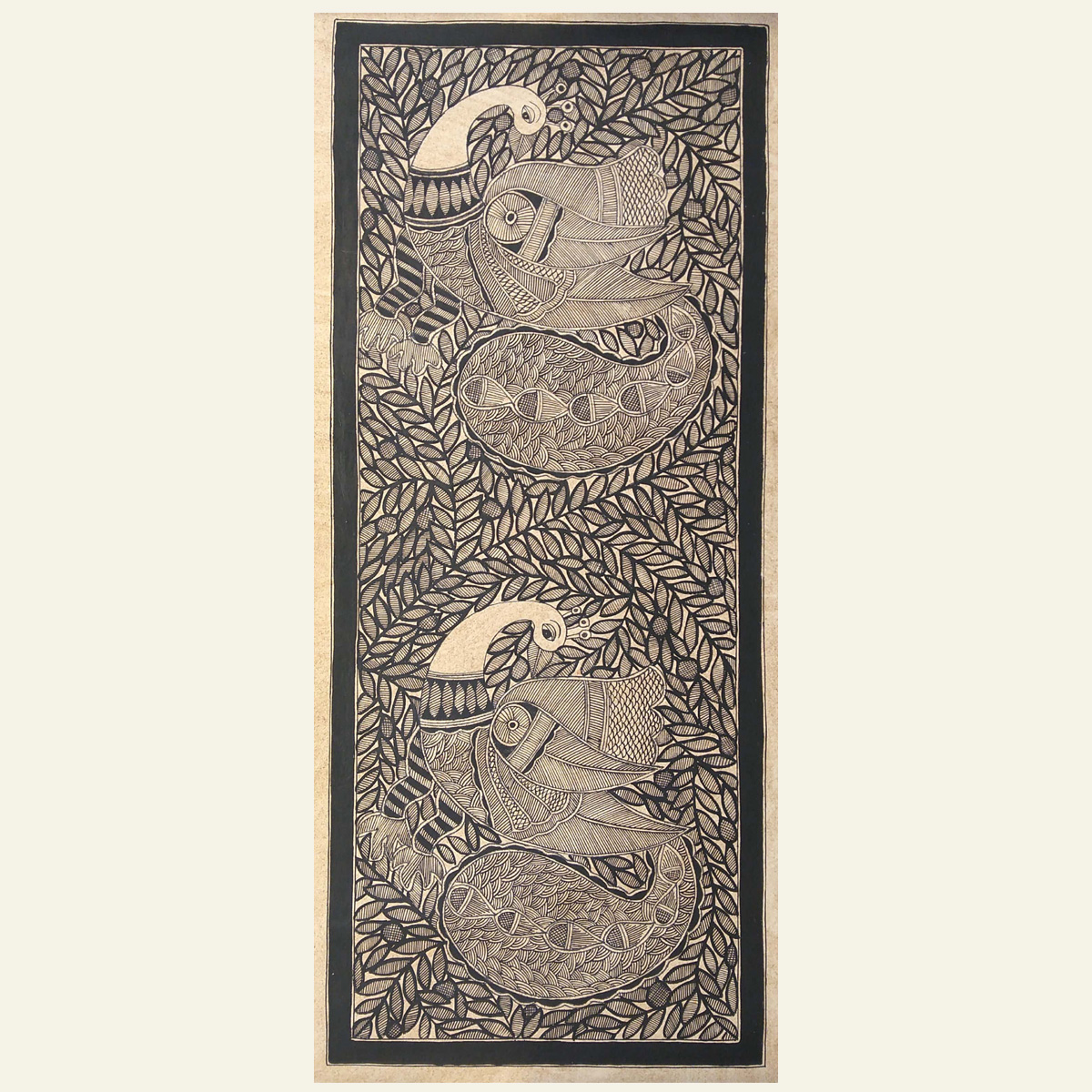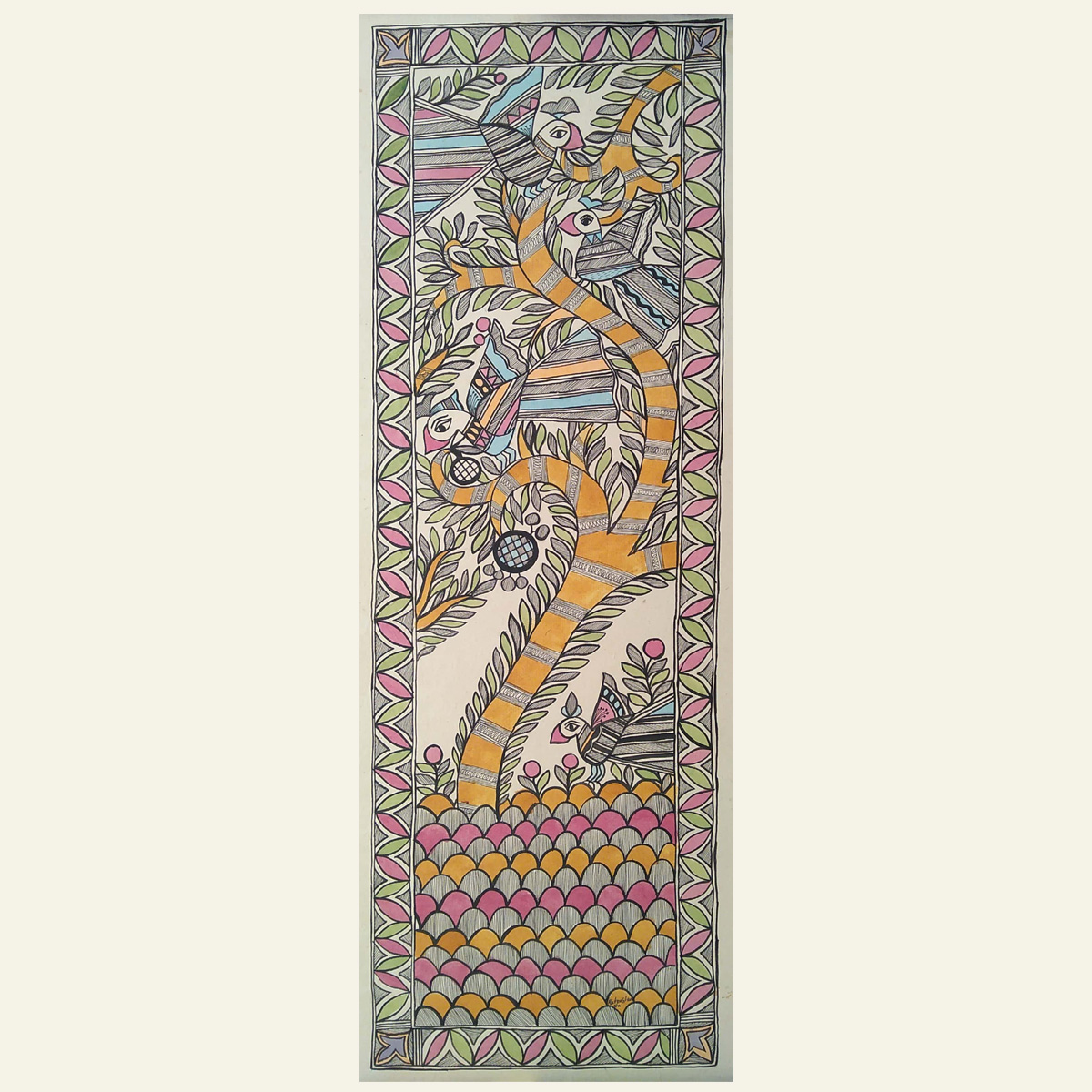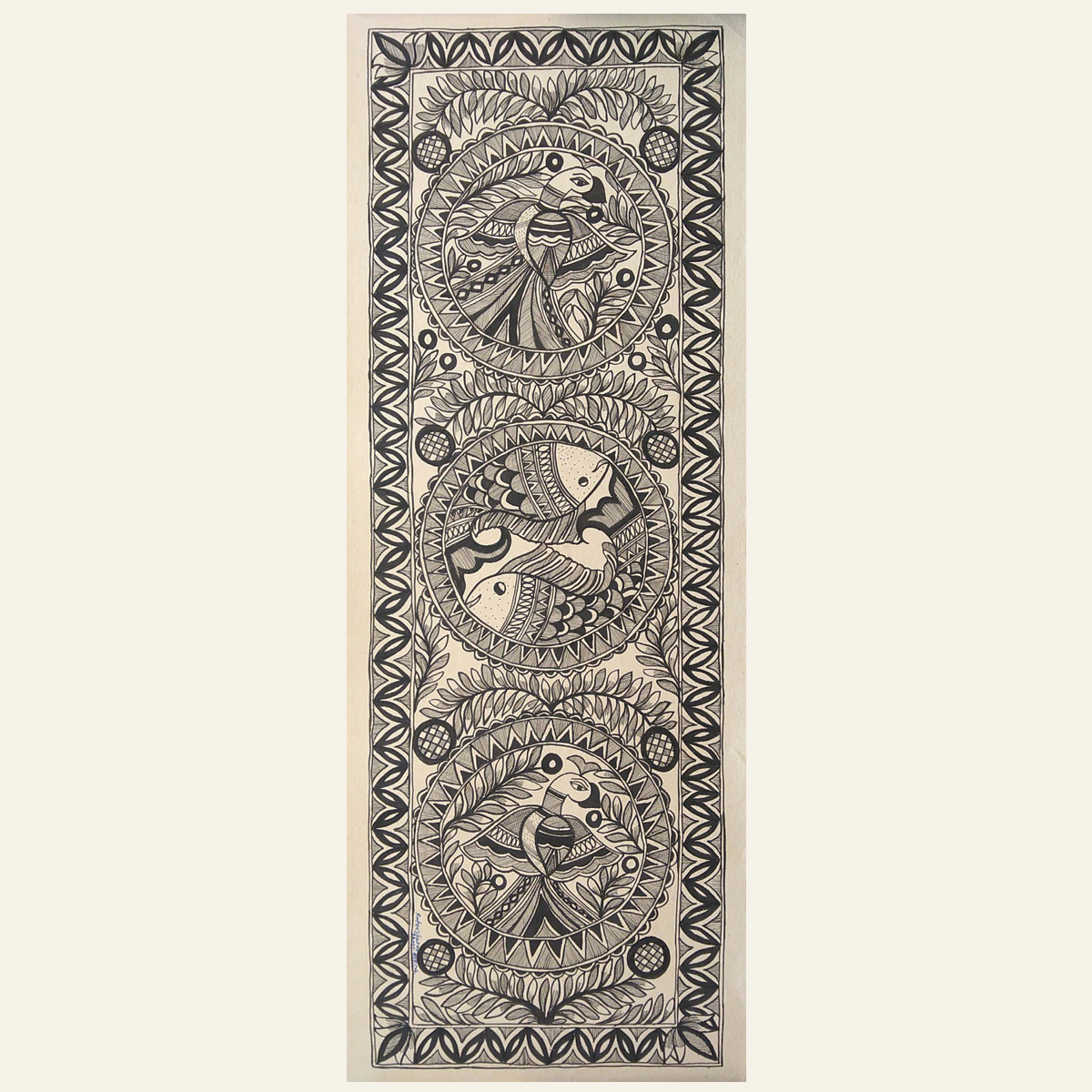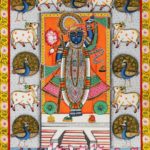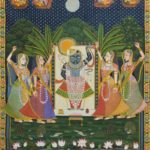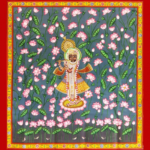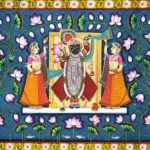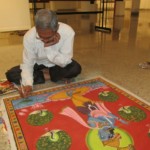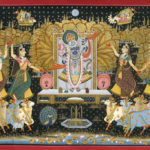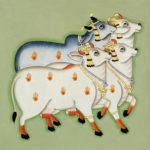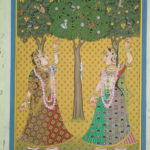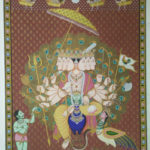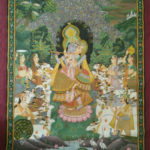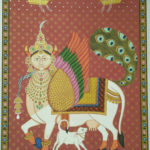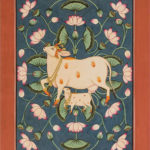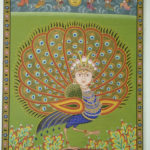Udaipur Rajasthan
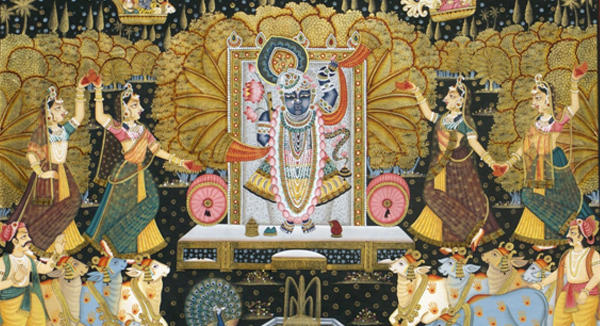
The above painting with Lord Krishna in the centre surrounded by gopis has been made on a cotton cloth with natural colours. These paintings are typically hung behind the statue of Lord Shrinathji in temples as they depict his leelas. These paintings known as Pichhwai paintings (Sanskrit word pichhthat means back and waismeans hanging). This art form originated in Deccan, India. Let us know more about this art form from the story of 12-year-old Sheetal.
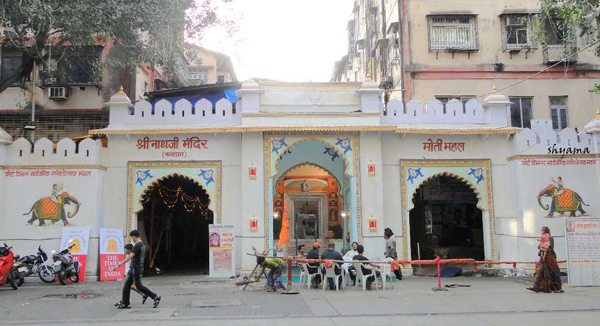
Sheetal lives in the Nathdwara, a major pilgrimage destination located on the banks of the Banas River in the Aravali hills, north of Udaipur in Rajasthan. It is well-known for the famous Shrinathji temple. The lives and occupations of Sheetal, her family, as well as all the villagers revolve around the temple. Members of Sheetal’s family own stalls that sell flowers, mithai, garments and other objects offerings made to Shrinathji. One of her uncles paints Pichhwai paintings and sells them as souvenirs to tourists as well as devotees.He is one of the last 10-12 Pichhwai artists in Nathdwara. The walls of the temple are also full of these paintings. The purpose of these paintings was to narrate stories of Lord Krishna to the illiterate.
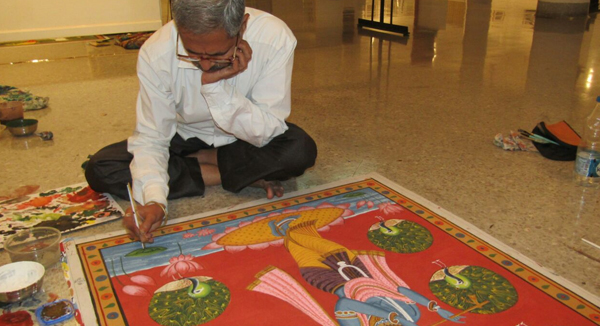
Since the time she was very young, Sheetal loved watching her uncle paint. At first, he starches the cloth on which he wishes to paint with maida paste, which prevents the colours from running together as well as from bleeding through the material. Once the fabric is dry, he paints the border. Then he determines the centre of the inner rectangle and marks it as this point determines the distribution of figures.The spacing on the fabric is done very systematically. First, the outer limit for the border, which will contain the creeper motif, is marked off with a coloured thread using a set square. The thread isdusted with charcoal or zinc white and leaves a mark where it is placed. With the same method, thecentral portion, which will contain the main scene, is also outlined.
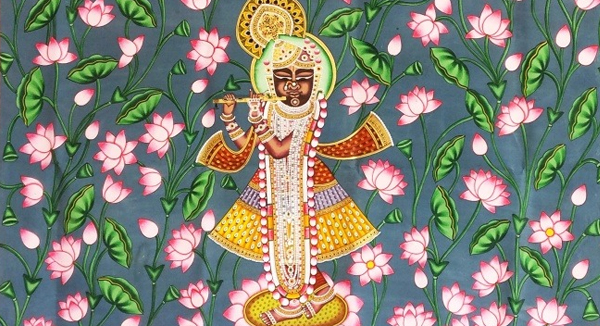
Then he makes a rough sketch with a pointed tip of a twig from a tamarind tree. This sketch is known as “tipan.” Following this, he fills it with natural colours. He uses brushes made of squirrel, goat and horse hair. He mostly uses vibrant blues & greens and brilliant reds & oranges made from vegetable extracts and traditional mineral compounds. He keeps natural dyes in a dry rock-like form and when he wishes to use the colour, he grinds the pieces into a powder and dissolves it in a mixture of water and gum resin. Once the initial colouring is finished, he polishes it by layering a butter paper above it and rubbing it from the reverse side with an agate stone. After the polishing, he shades the figures and adds detailing to the landscape as well as the figures. Nathdwara artists call this finishing “Likhai.”
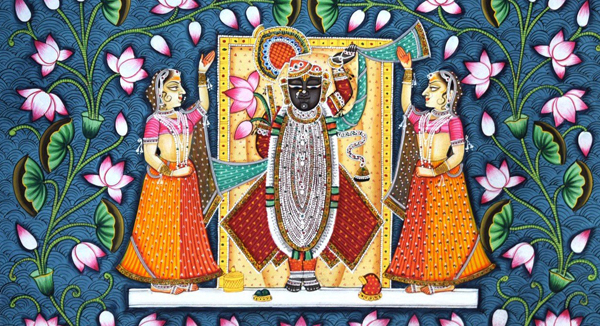
Some of his expensive paintings are made from pure goldand studded with gems. Colour made from pure gold takes 3-4 days to prepare.Gold and gems are added to these paintings after polishing. They are also rubbed with agate for a glossy finish. They are finished with a creeper motif on the border.Such paintings are commissioned by wealthy families for the temple.
As photography inside the temple is prohibited, Pichhwai painters paint the idol of Shrinathji that is found inside the temple for devotees and tourists to purchase.
Pichwai Artisans
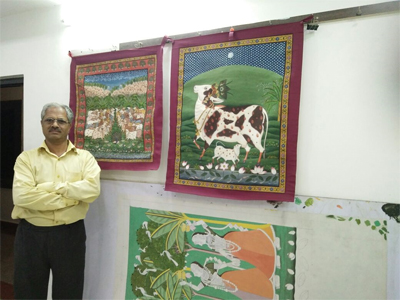
Arun Sharma
PichwaiPast Workshops
The Store

